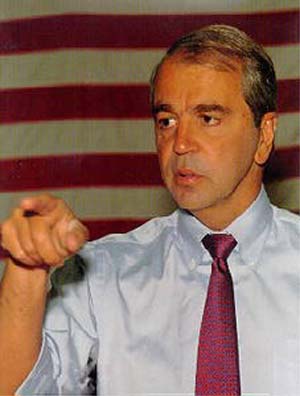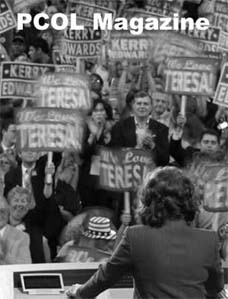
Signs of a revitalization began to crystallize during the mid-1970s, when US Senator Paul Tsongas, a Lowell native, organized a group of Lowell bankers to create the Lowell Development and Finance Corporation, which provided low-interest loans to finance preservation of historic buildings in Lowell.
Where laborers toiled, residents shop, relax
By Alexander Reid, Globe Staff | August 1, 2004
The mills defined Lowell a century ago, when they transformed the city into the nation's largest textile center. Today, they're changing the city again.
ADVERTISEMENT
But instead of sprawling workrooms filled with clattering machines and armies of workers, the mills house apartments, upscale condominiums, and offices.
Six mill redevelopment projects, with $128 million in private investment, are underway or in the pipeline, awaiting approval from regulatory agencies in the city. Altogether, the projects will bring 836 new apartments and condominiums priced at $200,000 to $300,000 to downtown Lowell within the next two years.
They occupy prime venues. Massachusetts Mills hugs the shoreline where the Merrimack and Concord rivers converge. Boott Mills also sits on the Merrimack, but it is located within a short stroll of cobblestoned avenues lined with shops, offices, restaurants, museums, and galleries. On the western end of the "Mile of Mills" is Lawrence Mills, located between the Tsongas Arena and LeLacheur Park, home of the Lowell Spinners. Several other mill buildings sit on the canals that snake through downtown Lowell.
They boast thick walls, high ceilings and tall windows, amenities that have drawn a new population to Lowell -- commuting professionals, empty nesters, artists, and young families looking for reasonable home prices.
"We've come to a point where you look back and say, 'Wow,' " said Peter J. Aucella, assistant superintendent of development for the Lowell National Historical Park. Aucella, who tracks projects in the city's mills, estimates that 75 percent of the city's five million square feet of mill space has either been converted or is slated for conversion in the next two years.
Aucella pointed out that development of the mills is proceeding with a strong emphasis on historic preservation, since they all are considered historic landmarks.
"At this pace, there won't be any available mill space left in all of Lowell," Aucella said. "We've come full circle with the mills, which is quite a feat when you consider where things were just a few years ago."
Indeed, these very same mills sat vacant and abandoned for many years after manufacturers closed them down and moved the work to the southern United States, and then abroad in search of cheaper labor. The mill buildings languished, as did much of downtown Lowell.
But signs of a revitalization began to crystallize during the mid-1970s, when US Senator Paul Tsongas, a Lowell native, organized a group of Lowell bankers to create the Lowell Development and Finance Corporation, which provided low-interest loans to finance preservation of historic buildings in Lowell.
Another boost was The Lowell Plan, a nonprofit economic development corporation formed in 1979 to market the city and guide development and growth in different sectors of the city.
These efforts helped kindle a belief that downtown Lowell could come back and that historic preservation of its buildings, particularly the 19th-century brick mills, could play a key role.
The current mill activity is a continuation of that process. The Lowell Housing Authority invested $6 million of funds into converting the Pilling Shoe Mill into the Francis Gate Apartments in 1979. The conversion created 90 units of subsidized apartments for elderly residents.
ADVERTISEMENT
Three years later, a $15 million conversion transformed Market Mills into a multi-use complex with 207 units for low-income elderly and families. The complex is also home of the National Park Visitor Center and the Brush Art Gallery.
In 1988, Braintree developer Joseph R. Mullins bought Massachusetts Mills, which sits at the confluence of the Merrimack and Concord rivers. He built 282 apartments in two portions of the mill complex, named Massachusetts Mills I and II for $29.5 million.
Fred Faust, who served as a legislative aide to Tsongas and later as director of the Lowell Historic Preservation Commission, said much of the early redevelopment activity in the mills centered on elderly and subsidized housing.
"There was not that much interest beyond elderly and subsidized housing," said Faust who today is president of the Edge Group Inc., a real estate firm. "It would be a while before the mills would see the broad residential base that we're seeing right now. But people still had a vision that it was possible but it would take time."
The development push cooled off altogether in the late 1980s because of the recession and crash in the real estate market. Joseph Mullins said his company flirted with bankruptcy as a result of the depressed real estate market.
"We were well into completing the first phases of Massachusetts Mills, then the bottom fell out," said Mullins. His company is readying plans for Massachusetts Mills III -- a $28 million project of 165 condos selling for at least $250,000 each. "It was February 1997. The economy was flat on its back. People were losing their properties. The value of our property declined and we couldn't get the rents we needed to cover operating costs."
In more recent years, however, Lowell's mill transformation has regained momentum. Several factors have played a role, from low-interest rates to the high housing costs in Boston and its surrounding communities. Another factor is Lowell's recreational and cultural attractions. Besides the Spinners, the city has a minor league hockey team, the Lock Monsters.
There is also the Merrimack Repertory Theater, summer concerts sponsored by the Lowell National Historical Park, museums and art galleries. Commuter trains make 45-minute trips into Boston's North Station from the Lowell Regional Transit Authority's Gallagher Terminal on Thorndike Street.
City Hall has also played a big role. Besides cooperating with developers to streamline the acquisition and renovation process, they created a master plan with guidelines aimed at preserving the historical integrity of the buildings. The plan also included a downtown arts district, where rehabilitation of loft-style factory buildings was geared toward the city's thriving artist community.
Colin McNiece, Lowell's director of economic development, said the city's strategy was to build interest in urban living, enticing not only developers, but buyers for their units.
ADVERTISEMENT
"The mills were infrastructure assets which we were able to use to our advantage," said McNiece. "They're huge, well located for what we wanted to achieve in downtown. Our mentality was to bring people into downtown, not only to live, but to experience a good quality of life."
All six of the conversion projects that are underway or awaiting approval are residential apartments and condominium projects.
Chris Starr, vice president of development for Winn Development, said his company expects to have the first of its 154 luxury apartments at Boott Mills East ready this winter. The $25 million project will include one-, two-, and three-bedroom apartments starting at $1,100 a month and going up to $1,450. "These are below market when you look at rents in communities for nice apartments within Route 128. It's city living and not as expensive as living in Boston."
John Callahan is a newcomer to Lowell. He moved to Canal Place II, part of a 175-condominium complex on Market Street. Callahan, who moved from Cambridge in 2003, bought his three-story loft unit with two bedrooms and a roof deck for $293,000.
" I was priced out of Cambridge, though I wanted to stay," said Callahan. "I couldn't afford it. I came here now knowing what I'd find and love the place. There is enough city life here, but if I want to go to Boston, I can take the train. I couldn't afford anything like this in Cambridge."
The development activity in the Mills has generated a high-end residential market downtown. Condominiums are being built and sold for $700,000. John DeAngelis is renovating a factory building on Market Street, and converting it to a luxury condo building with 22 units priced from $300,000 to $700,000. DeAngelis's project, named Market Gallery Lofts, will have a gourmet deli, an art gallery and a guitar shop on the ground floor.
"Every one of the units are sold," said DeAngelis, during a tour of his partially completed building. "I had no trouble selling them. They were mostly Boston people. They have a sense of what's happening in Lowell and they wanted to buy in -- immediately."
As he talked, DeAngelis pointed out that his units would be outfitted with granite countertops, exposed brick, natural wood finishing, jacuzzis, and fireplaces. He has started work on a penthouse condo, made of steel and glass with a private elevator. Price tag: $1 million-plus.
© Copyright 2004 Globe Newspaper Company.

